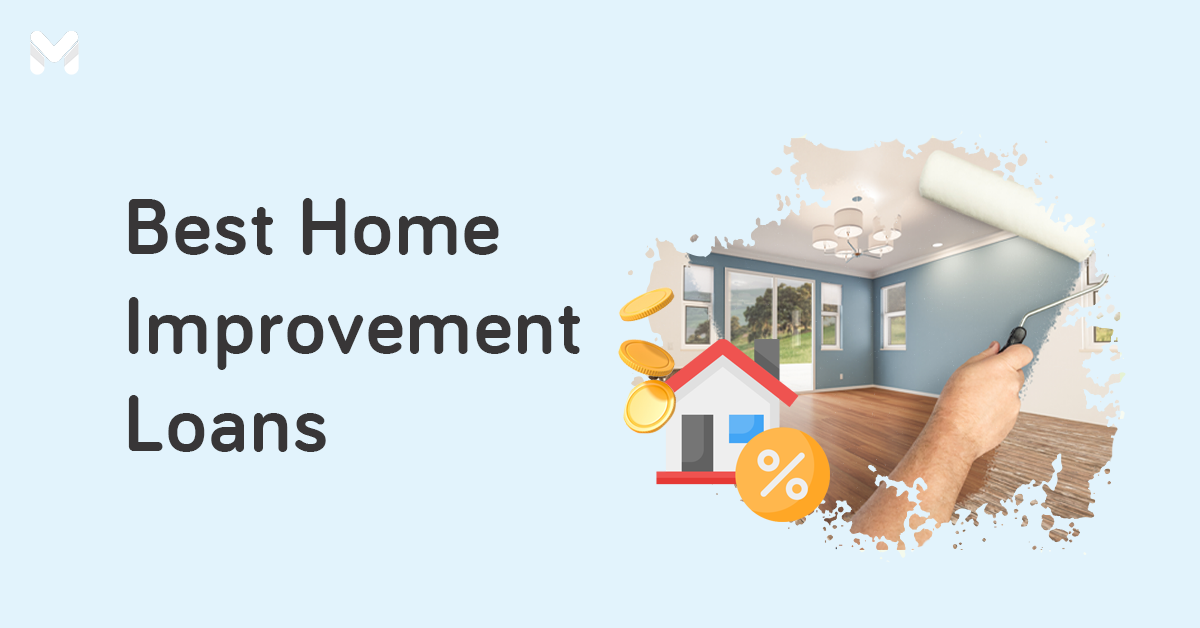Buying a home is one of the biggest purchases you'll ever make—so you have to carefully consider the best home financing option for your needs. Should you choose in-house financing vs bank financing? Or should you buy a house through Pag-IBIG?
All Filipinos who intend to buy a home should know their financing options. To help future homeowners like you choose the best option to pay off your mortgage, here’s a useful guide.
In-House Financing vs Bank Financing vs Pag-IBIG Financing: What is the Difference?
If you’re not paying for a house in cash, you can choose from three financing options, depending on your situation and needs.
📌 What is In-House Financing?
-4.png?width=674&height=449&name=Pics%20for%20blog%20-%20600x400%20(18)-4.png)
What is in-house financing? It's when a company offers a loan to consumers so that they can purchase goods or services.[1] Property developers typically offer in-house financing to their customers.
Since you have to prepare only a few requirements, it's usually easy to get approved for in-house financing in the Philippines. The process is also quicker than other home financing options. Note, however, that in-house financing interest rates are usually higher than those of banks.
When Should You Choose In-House Financing?
✔️ Your home loan applications from banks or Pag-IBIG were rejected
A lot of people try their luck with housing loans from banks and other lenders. However, due to low credit scores, these applications usually get denied. In-house financing is a mortgage alternative for those who can pay a housing loan but can’t get approved by banks.
✔️ You want to move in immediately
Most developers will allow you to move in right after your in-house financing gets approved. In contrast, the entire process for bank or Pag-IBIG financing can be long and tedious, especially if you have incomplete requirements.
✔️ You don't want to deal with lenders and financial institutions
Some people prefer transacting directly with the property developer because they feel that involving third-party financers would only draw out the home-buying process. In this case, in-house financing is the best option.
📌 What is Bank Financing?
-4.png?width=674&height=449&name=Pics%20for%20blog%20-%20600x400%20(19)-4.png)
Bank financing is more commonly known as a housing loan or home loan. How does it work in the Philippines? Banks or financial institutions provide these loans to borrowers for the purchase of a property.
In general, bank financing has slightly lower interest rates compared to in-house financing.
When Should You Choose Bank Financing?
✔️ You have a good credit score
Although Pag-IBIG and property developers also conduct their own credit investigations, the process of determining your creditworthiness is more stringent with banks. You'll need to pay off all your loans or have no delinquencies or late payments on record.
✔️ You need a fixed loan term
Bank financing comes with a fixed monthly interest and monthly installment amount throughout the loan period.
✔️ You want more options
Banks offer a variety of home loan options, some with lower interest rates and special promos.
📌 What is Pag-IBIG Financing?

Pag-IBIG financing is a home loan provided to qualified Pag-IBIG members who have made at least 24 monthly contributions. Through a Pag-IBIG housing loan, eligible members can purchase a house or get funding to pay any of the following:
- Single or adjoining residential lots at a maximum of 1,000 square meters
- Residential house and lot, condominium, or townhouse
- Construction of a house
- Refinancing of a house loan
- Renovation of a house
- Combined loan purposes
When Should You Opt for Pag-IBIG Financing?
✔️ You're a Pag-IBIG member
As a Pag-IBIG member, you can apply for different types of loans at low interest rates.
✔️ You have time (and patience) to process your application
The edge of in-house financing and bank housing loans vs Pag-IBIG is that with the latter, you'd have to go through the tedious process of bidding, submitting documents, and securing your loan application.
Although you can begin your application online, you also have to appear in person at a designated Pag-IBIG branch. You'll have to wait in long queues and spend at least an entire day to complete everything.
✔️ You’re willing to pay off your housing loan for a long time
In-house and bank financing usually offer shorter loan tenors. With Pag-IBIG financing, you can opt to pay off your loan for up to 30 years, as long as you’re not older than 70 at the end of the term.
✔️ You're a minimum-wage earner

Pag-IBIG offers an affordable housing loan program for minimum-wage earners. For as low as ₱2,445.30 per month and a loan period of up to 30 years, you can own your dream home.[2]
See also: Pag-IBIG Acquired Assets: Homebuyer’s Guide to Getting Foreclosed Properties
At a Glance: In-House Financing vs Bank Financing vs Pag-IBIG Financing
Choosing the best home financing option can be tough. You need to check not only the interest rates but also other factors that can affect your entire loan amount and repayment.
| Features | In-House Financing | Bank Financing | Pag-IBIG Financing |
|---|---|---|---|
| Interest Rates per Annum | 14% to 18% | 5% to 12% | 5.75% to 10% |
| Loan tenor | Up to 25 years | Up to 20 years | Up to 30 years |
| Loan purpose | Purchase property planned and built by the developer | Purchase property from a developer or from any other seller, home improvements, renovations, refinancing of an existing loan, and more | Purchase property from a developer or from any other seller, home improvement, construction, refinancing of an existing loan, and combined loan purposes |
| Loanable amount | Up to 80% of the property value | Up to 80% of the property value | Up to 100% of the property value |
| Processing time | Up to 2 weeks | Up to 2 weeks or longer, depending on how quickly you submit the requirements | Up to 2 months |
At a glance, the loan tenors for in-house financing, bank financing, and Pag-IBIG financing look almost the same, despite the differences in interest rates.
| Requirements | In-House Financing | Bank Financing | Pag-IBIG Financing |
|---|---|---|---|
| Credit Check | Yes | Yes | Yes |
| Employment/Business | Employed or with other sources of income for at least 2 years | Employed or with other sources of income for at least 2 years | Employed or with other sources of income for at least 2 years |
| Co-Borrower or Guarantor | No | No | No |
| Down payment and processing fees | Yes | Yes | Yes |
All three financing options require credit checks. Banks, though, are stricter in screening applicants for delinquencies and bad loans.
You need a stable source of income to ensure that you can pay off the loan. With in-house financing and bank financing, you need to verify your employment or business information. But Pag-IBIG is more lenient with first-time borrowers and even accepts remittance receipts from applicants who earn from freelancing gigs.
Before applying for any of these options, fix your credit history and pay off your outstanding balances first. A good credit score increases your chances of approval.
Plus, you have better chances of negotiating discounts. Check your credit profile by inquiring from the Credit Information Corporation.
Final Thoughts
Choosing between in-house financing vs bank financing vs Pag-IBIG financing will depend on many things. Compare these home financing options to understand how they work, what each option requires from you, and what they can provide.
Homeownership is a life-changing decision that can’t be decided overnight. Take time to research and inquire from different banks, developers, property agents, and people you know who have tried out these options. Consider the location and the type of house you’re planning to purchase.
Most importantly, consider your financial status. If you have doubts about repayment, defer the purchase and try renting a house first. But if you’re confident that your finances can cover the installments and renovations, it's time to turn your dream house into reality.
Compare Loans and Find the Best One Here!
Aside from housing loans, another way to fund home purchase, construction, or renovation is through a personal loan. Here are some of the best options from topnotch lenders in the Philippines.
|
Provider
|
Loan Amount
|
Monthly Add-on Rate
|
Loan Term
|
Minimum Annual Income
|
Approval Time
|
|---|---|---|---|---|---|
|
UnionBank Personal Loan
|
Up to ₱2 million
|
26.9% per annum
|
12 to 60 months
|
₱250,000
|
As fast as 5 minutes
|
|
UNO Digital Bank Personal Loan
.png?width=149&height=52&name=Unobank-Logo-Colored_Horizontal-Medium%20(for%20MMX).png) |
₱10,000 to ₱500,000
|
1.79% per month (corresponds to annual contractual rates or annual percentage rates ranging from 35.78% to 37.54%)
|
Six to 36 months
|
₱240,000
|
Five to seven banking days
|
|
Metrobank Personal Loan
|
₱20,000 to ₱2 million
|
1.25% to 1.75%
|
36 months
|
₱350,000
|
Seven banking days
|
|
BPI Personal Loan
 |
₱20,000 to ₱3 million
|
Maximum annual contractual rate of 28.67%
|
12 to 36 months
|
Inquire with BPI
|
Five to seven banking days
|
|
Tonik Credit Builder
 |
₱5,000 to ₱20,000
|
4.84%
|
Six to 12 months
|
Inquire with Tonik
|
Two banking days
|
|
Tala

|
₱1,000 to ₱25,000
|
0.43% daily
|
Up to 61 days
|
None
|
Five minutes to 24 hours
|
|
HSBC Personal Loan
|
₱30,000 to ₱500,000
|
0.65%
|
Six to 36 months
|
₱168,000
|
Five to seven banking days
|
|
CIMB Personal Loan
|
₱30,000 to ₱1 million
|
As low as 0.83%
|
12 to 60 months
|
₱180,000
|
One to two banking days
|
|
Maybank Personal Loan
|
Up to ₱1 million
|
1.3%
|
Up to 36 months
|
₱300,000
|
Inquire with Maybank
|
|
RCBC Bank Personal Loan
 |
₱50,000 to ₱1 million
|
1.3%
|
Six to 36 months
|
₱360,000
|
5 to 7 banking days
|
|
PSBank Personal Loan
 |
₱20,000 to ₱250,000
|
|
24 or 36 months
|
₱180,000
|
Five to nine banking days
|
Sources:
- [1] In-House Financing (Investopedia)
- [2] Pag-IBIG Affordable Housing Loan for Minimum-Wage Earners







_1200x350.png?width=751&height=219&name=UB_PL_Generic_2_(Jan_2025)_1200x350.png)


